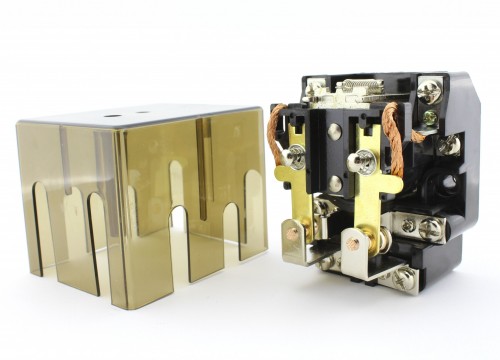- ACRYSTEX MS RESIN
- AGON®
- AMILAN™ PA
- BIFFA r-HDPE
- BIFFA r-PP COMPOUND
- CELANEX® PBT
- CELANYL® PA
- CLEARFLEX LLDPE
- CRASTIN
- DIAKON PMMA
- DISTRUPOL-PRECW
- DRYFLEX® CIRCULAR
- DRYFLEX® GREEN
- DRYFLEX® TPE
- DUTRAL®
- ECOMID® PA
- EGYEUROPTENE
- ELASTOLLAN TPU
- ELTEX MED
- ELTEX P POLYPROPYLENE
- ELVAKON PMMA
- ENTHOVEN RECYCLED PPC
- ERACLENE HDPE
- EUROPRENE®
- EVICOM PVC COMPOUNDS
- FLEXIRENE LLDPE
- FRIANYL® PA
- GREENFLEX EVA
- HY-VIN PVC COMPOUNDS
- HYTREL
- INEOS EBA
- INEOS EMAA
- INEOS LDPE
- INEOS LLDPE
- INEOS PP
- INEOS mLLDPE
- IPETHENE LDPE
- KEPITAL™ POM
- KIBILAC ASA
- KIBISAN SAN
- KIBITON Q-RESIN
- KIBITON TPE
- LG ABS
- LG ASA
- LG LUPOX PC/PBT
- LG LUPOY PC
- LG LUPOY PC/ABS
- LG LUPOY PC/ASA
- LG LUSEP PPS
- LG SAN
- MEDALIST TPE
- MEDIPRENE TPE
- MINLON PA
- MONPRENE TPE
- PEARLENE
- PHARMALENE PE & EVA
- PINNACLE HPP
- PINNACLE ICPP
- PINNACLE RCPP
- POLYCHIM PP
- POLYLAC ABS
- POLYREX PS
- PURGEX CLEANING COMPOUND
- PVOH (Polyvinyl Alcohol)
- RECYCL-IN
- RIBLENE LDPE
- RIGIDEX HDPE
- RIGIDEX MDPE
- RYNITE PET
- SARLINK TPV AND TPE
- THERMOFIL REINFORCED PP COMPOUNDS
- TORAYCON PBT
- TORELINA PPS
- TOYOLAC ABS
- TOYOLAC MABS
- TRIFILON BIOLITE
- TRIFILON REVO
- TRIFILON SWITCH
- WELLS PLASTIC ANTISTATICS
- WELLS PLASTICS ANTIBLOCKS
- WELLS PLASTICS ANTIMICROBIALS
- WELLS PLASTICS ANTIOXIDANTS
- WELLS PLASTICS BLOWING AGENTS
- WELLS PLASTICS FLAME RETARDANT MASTERBATCHES
- WELLS PLASTICS FRAGRANCES
- WELLS PLASTICS OXO BIODEGRADABLES
- WELLS PLASTICS PROCESSING AIDS
- WELLS PLASTICS PURGE AND CLEANING COMPOUNDS
- WELLS PLASTICS SLIP AGENTS
- WELLS PLASTICS UV STABILISERS
- WONDERLITE PC
- WONDERLOY PC/ABS
- ZYTEL PLUS
- ZYTEL HTN
- ZYTEL LCPA
- ZYTEL PA
- ZYTEL RS
Electrical Insulation
Features of Crastin®
Crastin® for safe electrical applications
Aside from its impressive versatility as a polymer material, which is available in FDA and EU approved grades for food and cosmetics applications, Crastin® meets the most stringent electrical insulation standards.
Many of our polymer grades are used in electrical applications as most chemistries are naturally electrical insulators. Polymers provide safety to ensure the user of the product is not at risk of an electrical shock. So where do you start in terms of isolating a polymer grade that’s the best for your application? Many factors need to be taken into consideration when making a product selection, including:
- The voltage of the application
- Operating temperature of the product
- Flame retardancy needs
- Product colour
- Mechanical loads on the product
- Approvals needed (UL, IEC….)
- Chemical resistance
- Thermal ageing requirements
Even with these areas of focus, you could still be left with quite a few chemistries for consideration, so here we’ll explain why Crastin® PBT may provide the competitive edge.

Electrical relays – an electrical switch to either make or break circuits needs best-in-class electrical insulation properties.
Crastin® – electrical insulation at temperature
When looking at the electrical data on our polymer grade technical data sheets, test data like Current Tracking Index (CTI) or the dielectric strength data is taken into consideration.
The dielectric strength is an indication of the polymer's resistance to an electrical voltage where a plastic test piece is put between two electrodes and a voltage is applied. The voltage is increased until the natural insulation properties of the polymer are broken down and destroyed and that voltage is then recorded.
At room temperature, polyamide (nylon) chemistries can perform very well with recorded data up and around 30kV/mm with similar results for our Crastin® PBT. However, when products are operating at higher temperatures, it's very important to note that with polyamide based chemistries, the performance can rapidly decrease.
Electric strength vs temperature
Other features of Crastin®
© 2025 Distrupol. All rights reserved.